The last thing any of us wants to worry about is dealing with rusted license plate screws. Whether you’re heading out on the highway for a scenic road trip or trying to show off your latest car customization at a local car meet, rusty screws can be a real drainer — both literally and figuratively. The sight of those unsightly rusted screws can dampen your mood and take away from the overall aesthetic appeal of your vehicle. But fear not! This article has got you covered with some tried and true methods to remove those stubborn rusted license plate screws. With a little bit of patience and the right tools, you can tackle this issue and get back on the road in no time. So, let’s dive into the step-by-step process and ensure that your license plate stays securely in place, free from the clutches of rust.
Things to Know Before You Start Removing Rusted License Plate Screws
So, before you dive into the process of removing your rusted license plate screws, it is important to understand a few things.
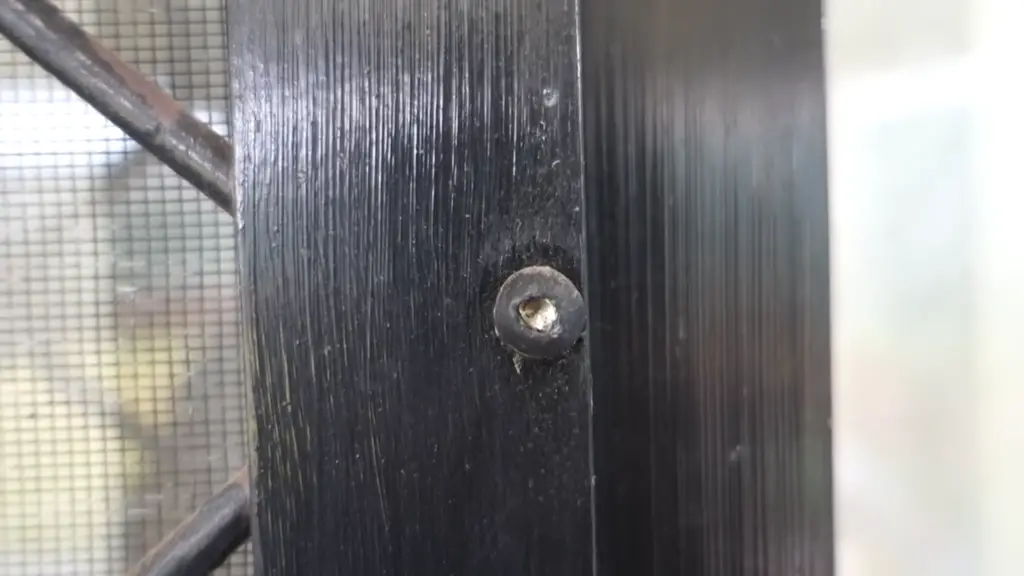
First and foremost, rust can be quite stubborn so make sure that you have the right tools available for the job. You will need some sort of wrench or screwdriver with a flat head on one end and a Phillips head on the other end; having a lubricant on hand is also helpful.
Another important factor to keep in mind is that rust removal methods vary depending on how severe the rust is. If the screws are not too severely rusted, you may be able to remove them with a screwdriver and some lubricant; however, if they are more heavily corroded, you will likely need to use a chemical remover or an abrasive wheel to get them out.
Finally, always remember that patience is key when dealing with trusted screws. Taking your time and using the right tools will make the job much easier. With that, you can get back to driving with new plates in no time!
How to Remove Rusted and Stripped License Plate Screws
Custom-Made Wrench Fit Your License Plate Screw
When it comes to removing rusted screws, having a custom-made wrench that perfectly fits the size and shape of your license plate screw is not only effective but also provides added convenience. This specialized wrench is crafted by meticulously capturing the exact impression of the screw’s head, ensuring a precise grip that prevents slippage or further stripping. By using this tailor-made tool, you can confidently tackle the task at hand with ease and efficiency. However, if a custom-made wrench is not readily available, an alternative option is to utilize a pair of pliers with padded jaws, which can also assist in securely removing the rusted screws from your license plate.
Penetrating Oil for Rusted Screws
Applying penetrating oil to rusted screws can be a game-changer when it comes to loosening them up and breaking through the stubborn rust buildup. This tried-and-true remedy is particularly useful if the head of the screw is completely stripped, leaving no room for any tool to grip onto it.
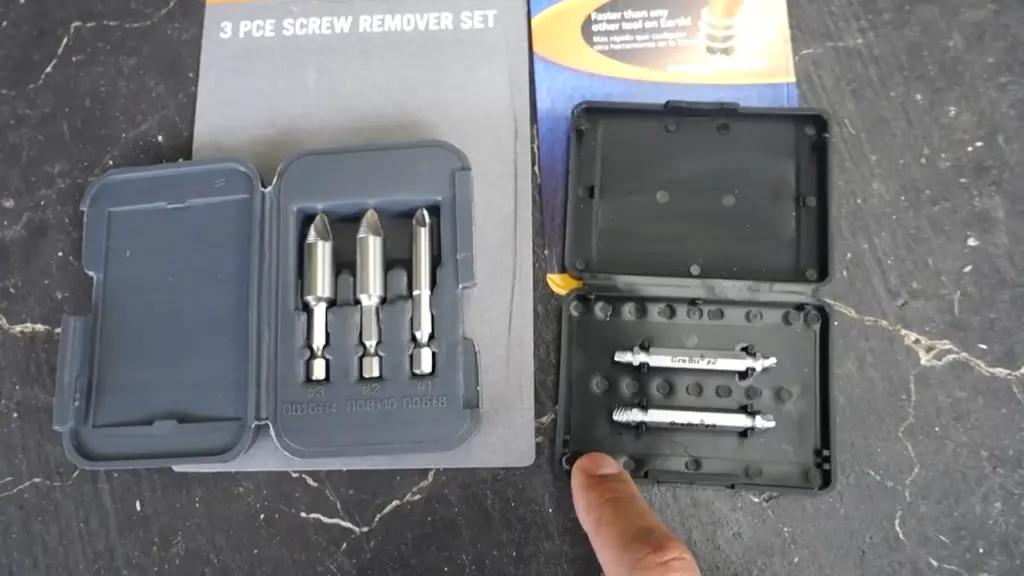
To make the most of this solution, you’ll want to generously apply the penetrating oil to the screw and patiently let it sit for a few minutes. This will allow the oil to penetrate deep into the rust, working its magic and making the removal process smoother.
When it’s time to tackle the stubborn screw, consider using an extension bar to provide that extra bit of leverage. This added length will give you more control and increase your chances of successfully removing the rusted screw without any hassle. So, next time you encounter a stubborn rusted screw, remember to reach for that trusty penetrating oil and give yourself the best shot at a successful removal!
Removing Rusted Screws Using Heat
Besides penetrating oil, another popular remedy for removing rusted screws is the use of heat. Applying heat to a rusted screw helps weaken the bond between the threads and can be an efficient way to quickly remove it from its place.
Although any type of flame can be used to apply heat to the screw, many professionals suggest using an electric heating gun to ensure precise temperature control and a more efficient heating process. This tool allows you to evenly apply heat to the screw while avoiding damage to its surrounding area, ensuring that the job is done with utmost safety and accuracy.
Once the rusted screw has been sufficiently heated up, it should be much easier to remove using an appropriate tool such as a wrench or pliers.
Removing Stripped Rusted Screws
When all hope seems lost, there is still one last resort you can try: reverse threading. This technique involves taking a screwdriver and turning the rusted screw in the opposite direction to that of normal screws. In this way, the makeup of the damaged threads works in your favor by creating extra grip to successfully extract even the most stubborn of screws.
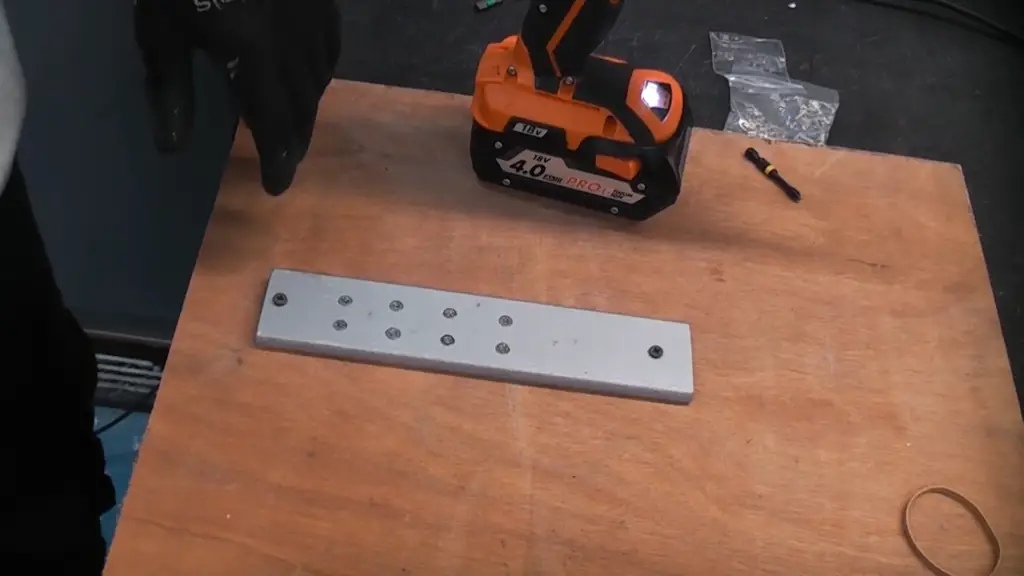
It is important to note, however, that this method should only be used as a last resort because it can cause further damage to the screw. To make sure you don’t end up with a stripped, completely unusable screw, use an appropriate tool and turn the rusted screw in increments until it finally loosens up and comes out.
Using a Screw Extractor Set When All Else Fails
If you find yourself unable to remove the rusted screw despite trying out all of the above solutions, then it’s time to bring in reinforcements. A screw extractor set is designed specifically for this purpose and can prove to be a lifesaver when all else fails.
This handy tool usually consists of a drill bit and a left-handed spiral extractor. It works by drilling through the rusted screw, using the left-handed spiral to catch on any remaining threads so you can twist it out with ease. Although this solution may seem intimidating at first, proper use of this tool will make sure that you get the job done with minimal effort and maximum efficiency [1].
How to Use Heat to Remove Rusted Screws From a License Plate
Water-Based Degreaser Method
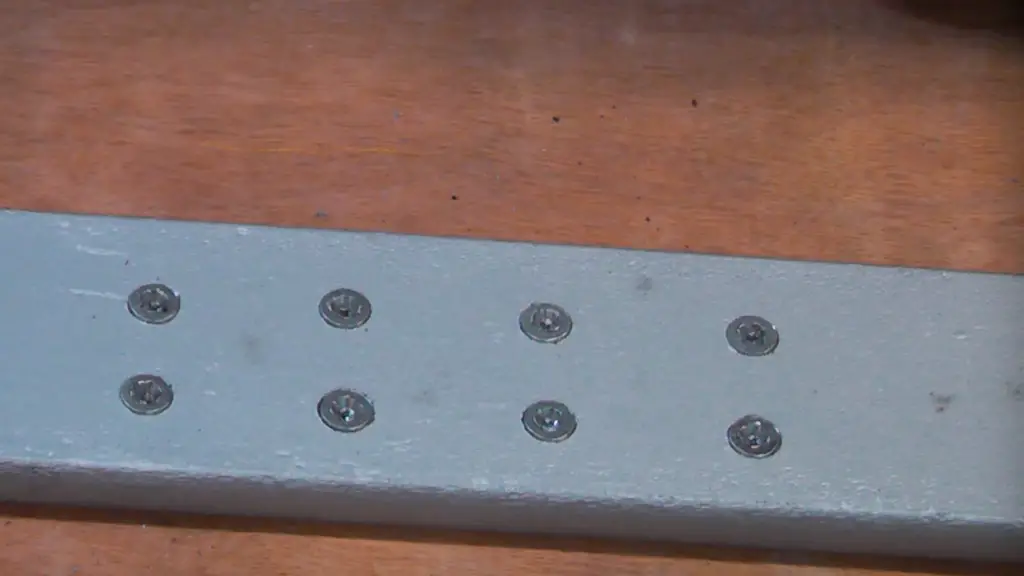
If you find yourself in a situation where you need to remove a stubborn, rusted screw from your license plate, there is a tried-and-tested method that you can employ to make the task easier. The water-based degreaser method has proven to be effective in such cases. Begin by preparing a solution of mild cleaners, such as dish soap, and warm water. This concoction will help to loosen the rust that has accumulated around the screw head, making it easier to work with. Gently apply the solution to the affected area, ensuring that it seeps into the crevices and reaches the rusted screw. Allow the cleaner to do its magic and work its way through the rust for a few minutes. This will help to weaken the grip of the rust, making it easier to remove the screw.
Once the rust has been sufficiently loosened, grab an adjustable wrench or any other appropriate tool that can provide a firm grip. Carefully position the tool on the screw head and begin turning it counterclockwise. Take your time and apply steady pressure to avoid any damage to the license plate or the surrounding area. With patience and persistence, you’ll be able to successfully unscrew the rusted screw from your license plate, leaving it clean and ready for whatever comes next.
Heat Method
If the water-based degreaser is not effective in removing the rusted screw, you may consider applying heat to loosen the rust and facilitate the removal process. To do this, start by using a blow dryer or heat gun set on low heat to gently warm up the area surrounding the screw head. The application of heat will help to soften the rust, making it easier to loosen and remove. However, it is important to exercise caution and avoid applying excessive heat, as this can potentially cause damage to the license plate and the surrounding area. By taking this careful approach, you can effectively tackle the challenge of removing a stubborn rusted screw.
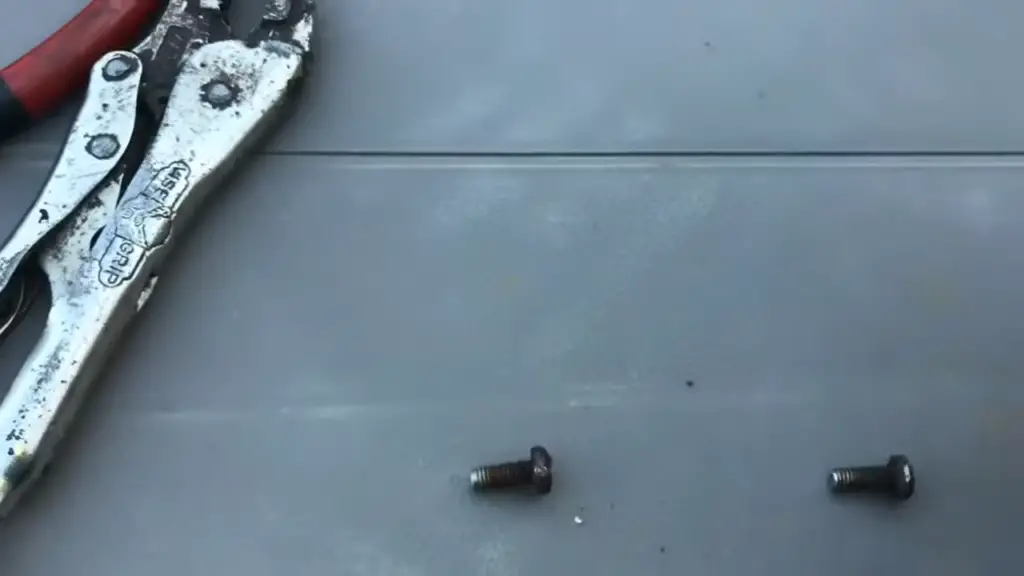
When you’re satisfied that the rust has been sufficiently softened, take a Phillips screwdriver or another appropriate tool and begin unscrewing the rusted screw with a firm grip while applying steady pressure. With patience and perseverance, you should be able to successfully remove the rusted screw from your license plate.
Torch the Screws
When dealing with stubborn rusted screws, using a torch is often considered as the last resort. It is crucial to exercise caution as improper handling can lead to irreversible damage to your license plate and its surroundings. Before proceeding, make sure to clear the area around the screw head of any flammable materials to ensure safety. With careful precision, apply heat to the affected area using the torch until the rust has adequately softened, making it easier to remove. Take your time and exercise patience to ensure a successful outcome.
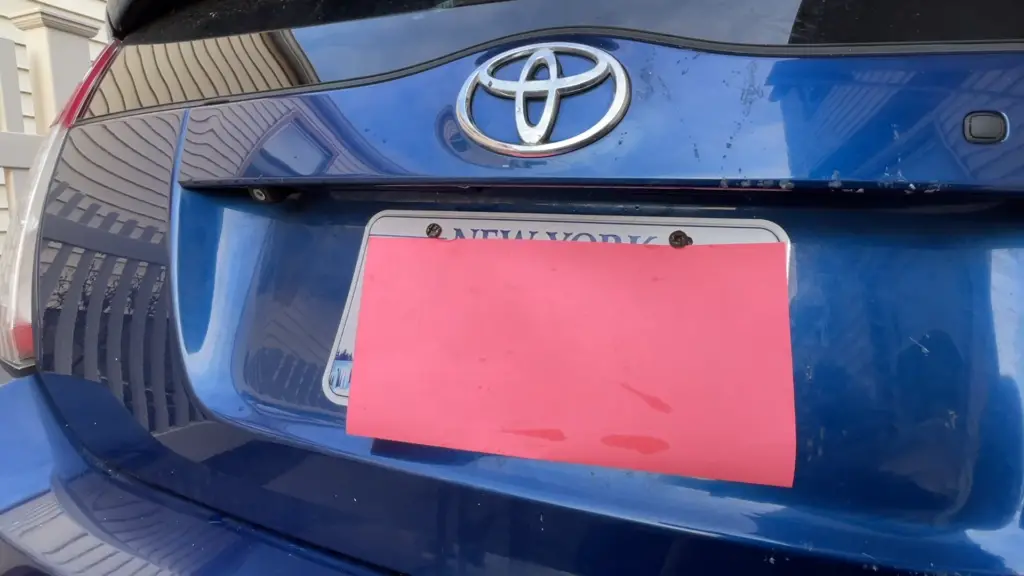
FAQ
How do you remove corroded screws from metal?
Removing corroded screws from metal is not an easy task, but here are a few methods you can try:
- Use penetrating oil to loosen the screw. If you have access to a lubricant like WD-40 or Liquid Wrench, saturate the head of the screw with the oil and wait for 10 to 15 minutes before attempting to remove it.
- Heat the screw head using a blow torch or electric soldering iron. This will soften the rust and make it easier to remove without having to apply excessive force.
- Use a screwdriver that fits properly in the grooves of the screw head, as an ill-fitting tool can slip and damage the surface around it. If necessary4. If all else fails, you can use a drill and bit that is slightly smaller in diameter than the screw head to break up the rust and weaken it enough so that it can be removed with minimal effort.
- Use a specialized tool – if none of the above methods has been successful, some stores sell specialized tools for removing corroded screws from metal surfaces
Are there any tips for preventing screws from corroding?
Yes, there are some steps you can take to prevent your screws from corroding:
- Choose an appropriate screw material for the job. Stainless steel and other materials that are resistant to rust and corrosion will last longer and provide better protection against weathering elements.
- Before installation, apply a coat of lubricant to the screw threads. This will create a barrier between the metal and moisture, thus preventing oxidation from taking place.
- Use nuts with built-in locking mechanisms such as nylon inserts or jam nuts. These will provide extra protection against both corrosion and vibration loosening.
- When possible, use galvanized screws in outdoor applications. Galvanization provides a protective coating that will slow down the corrosion process.
- Keep an eye on your screws and replace any that appear to be deteriorating due to rust or oxidation. This will help ensure the stability of the connection for years to come.
What is the best way to store screws in humid environments?
In humid environments, proper storage is key to preventing corrosion. Here are some tips for storing your screws in such conditions:
- Choose a sealed container with good insulation and ventilation. This will keep humidity levels low and prevent moisture from damaging your screws.
- Make sure the screw containers are labeled clearly so you can find what you need quickly and easily without having to rummage through multiple containers.
- Store the screws in an area of your home or workshop that is away from direct sunlight and heat sources as these can accelerate the corrosion process.
- If you must store them outside, make sure the container is protected from rain and other elements. Keep it in a dry location with adequate ventilation.
Finally, consider using desiccant packs or silica gel packets to absorb excess moisture. Replace these periodically as needed to ensure your screw storage area remains dry and well-ventilated.
What tool is used to remove rusty screws?
A screwdriver can be used to remove rusty screws, but the key is choosing the right tool for the job. First, make sure the head of your screwdriver fits properly in the grooves of the screw head to prevent slipping and damaging the surface around it. Then, use a lubricant such as WD-40 or Liquid Wrench to saturate the head of the screw. This will help to loosen the rust and make it easier to remove.
If necessary, you can even use a drill and bit that is slightly smaller in diameter than the screw head to break up the rust and weaken it enough so that it can be removed with minimal effort. Finally, if all else fails, some stores sell specialized tools for removing corroded screws from metal surfaces.
How do you remove corroded plastic screws?
Removing corroded plastic screws can be a tricky task, but here are some tips to help you get the job done:
Take your time and use caution. Do not apply too much force as this could cause irreparable damage to the plastic threads. Instead, take it slow and gently work your screwdriver in until it is fully seated. If the screw is particularly corroded, you can try soaking it in a lubricant such as WD-40 or Liquid Wrench. This will help to loosen the rust and make it easier to remove.
You may also need to get creative with your tools. If a regular screwdriver doesn’t work, try using a flathead screwdriver with electrical tape wrapped around the tip. This will provide added grip and make it easier to turn the screw.
Finally, if none of these methods work, you can always try using a drill bit slightly smaller than the head of the screw to break up the rust and weaken it enough so that it can be removed with minimal effort.
Does WD-40 remove rust?
Yes, WD-40 can be used to remove rust from metal surfaces. Simply spray it onto the affected surface and let it sit for several minutes before using a cloth or brush to scrub off the corrosion. This will help prevent further rusting and keep your surfaces looking clean and shiny. It is also important to note that WD-40 should not be used on plastic surfaces, as it can cause discoloration or damage to the material.
You can also use WD-40 to loosen rusty screws that have become stuck in place. Simply saturate the head of the screw with WD-40 and wait for 10 to 15 minutes before attempting to remove it. This will help break up any corrosion and make it easier to unscrew
Are there any alternative methods for removing rust?
Yes, there are several alternative methods for removing rust from metal surfaces. One of the simplest solutions is to use a mixture of baking soda and water. Simply mix equal parts of baking soda and water into a paste, then apply it to the corroded surface with a cloth or brush. Let it sit for several minutes before scrubbing off the rust with a dry cloth.
Another option is to use white vinegar or lemon juice mixed with salt. This mixture works in much the same way as baking soda, but you may need to scrub more vigorously to remove heavier corrosion.
Finally, you can try using a pumice stone or steel wool for light rust removal. This method may also be effective for removing rust from small areas such as the head of a screw or bolt.
Regardless of which method you choose, it is important to remember to rinse off any remaining residue with water and dry the surface thoroughly afterward. Doing so will help prevent future corrosion and ensure your surfaces stay looking clean and rust-free.
Does WD-40 penetrate rust?
Yes, WD-40 is designed to penetrate rust and corroded surfaces. This is why it is often used to loosen rusty screws and fasteners. It helps to break up the corrosion by softening it and making it easier for you to remove or unscrew the part in question.
Just be sure not to use too much, as WD-40 can also damage plastic surfaces, so use it sparingly when dealing with metal parts. Additionally, you should always take the necessary precautions to protect your eyes, skin, and lungs from any fumes or aerosols produced by WD-40 during application.
For more stubborn rust buildup, heavier-duty penetrating oils such as Kroil oil may be needed. These are much stronger than WD-40 and should only be used when necessary. Before using any solvent, however, always read the manufacturer’s safety instructions to ensure you know how to handle it properly.
Useful Video: Removing a stubborn rusted license plate screw
Conclusion Paragraph
Removing rusted license plate screws can be a tricky task. With the right tools and a few simple techniques, however, you can remove rusted screws from your license plate with relative ease. For more stubborn screws, use penetrating oil to lubricate the threading of the screw and allow it to slowly loosen up over time. If using an impact driver, always make sure that you have the correct size bit and keep the screwdriver bit firmly pressed against the head of the screw. Finally, if all else fails, consider calling a professional for assistance with removing your license plate screws. With these simple tips, you can be sure to quickly and easily remove rusted screws from your license plates without damaging them or yourself.
References
- https://rxmechanic.com/how-to-remove-rusted-license-plate-screws/
- https://www.drillanddriver.com/how-to-remove-rusted-license-plate-screws/






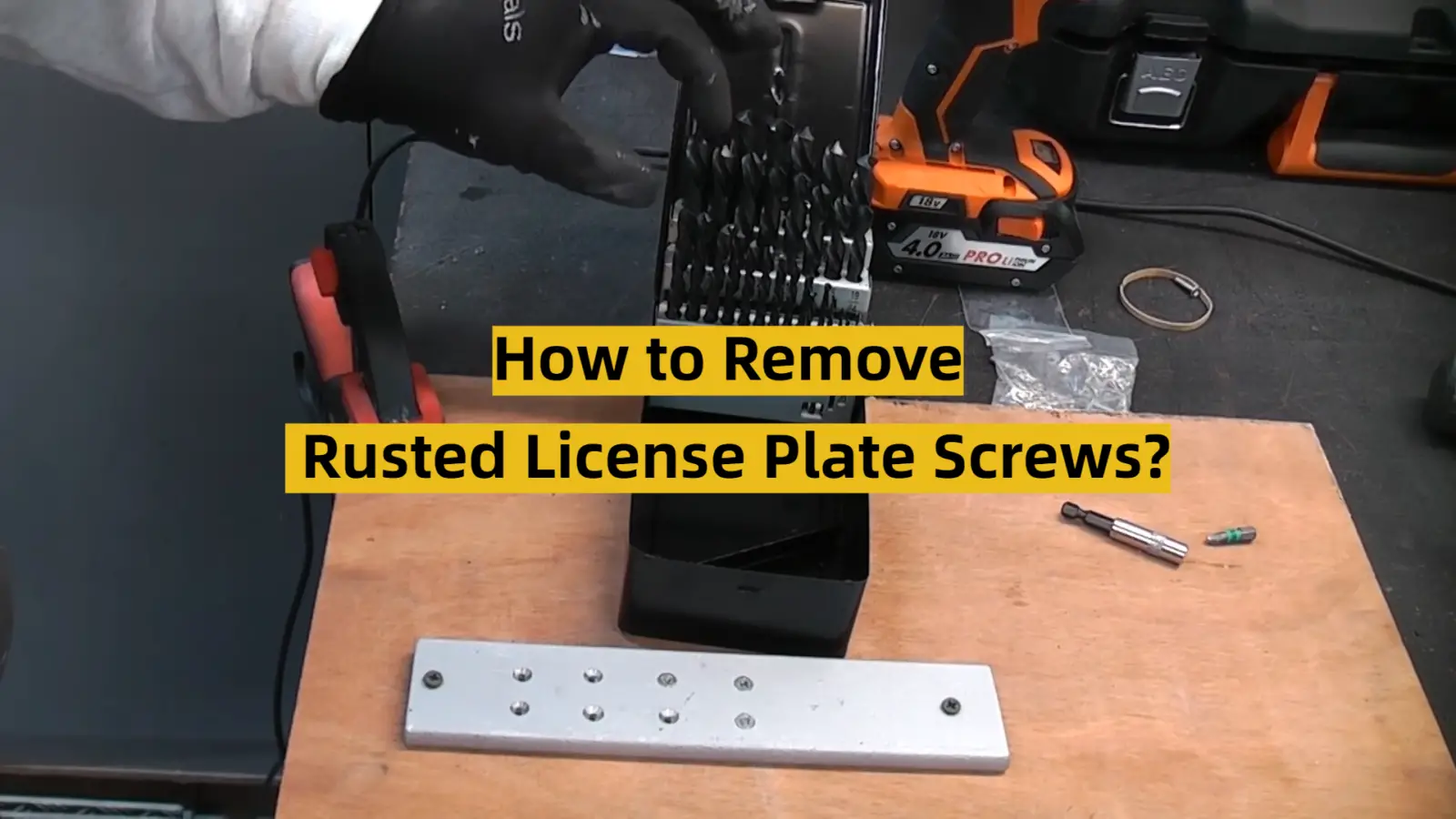




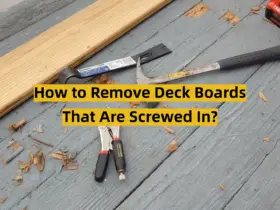
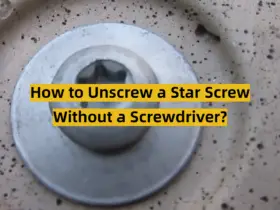
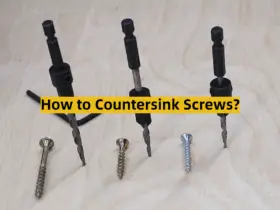
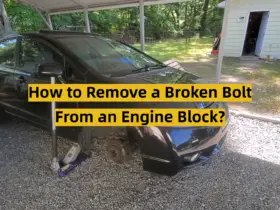
Leave a Reply